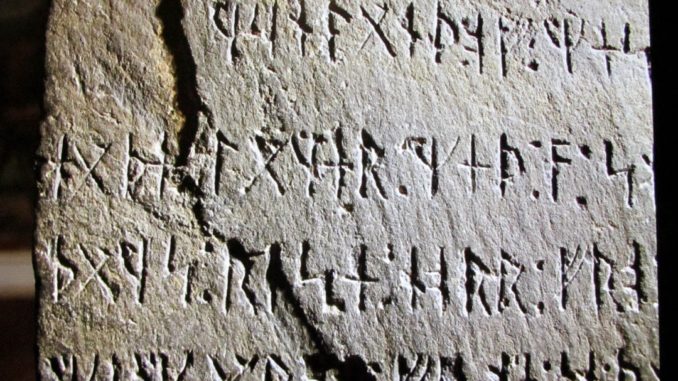
In 1898, a farmer by the name of Olof Ohman claimed he dug up a 200-pound rock while plowing new woods near his farm. His son noticed that the big rock had carvings on it, so they flipped it over and tried to read it. This happened in Kensington, Minnesota. Initially, Olaf and his son, Edward, thought the stone was carved by native Americans. They thought it was possibly an “Indian Almanac.”
The runes were Viking runes.
From that moment until now, people continue to debate whether the stone is real. As they’ve debated this, more runes have been discovered along the northeastern United States, like in Maine and Rhode Island. And experts finally realized that an old tower in Newport, RI wasn’t actually a mill, but a Viking tower that during the winter solstice, points to Kensington. For a quick and easy lesson on all this, go watch the History Channel documentary, “Holy Grail in America.”
We also found some Viking runes down in Alabama, which of course you can read up on in my first book, “Vikings, Vampires, and Mailmen.”
The point of this post is that the Vikings made it to Minnesota, and they found something out there that was very important to them. So important, in fact, that they built a rather impressive tool to lure the vampires away from it. That’s what makes the Kensington find so important: were vampires a huge problem for them in the New World? And if not, what was so important about the Kensington location that they worked hard to keep vampires away from it?
